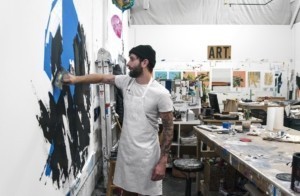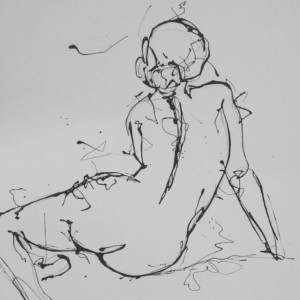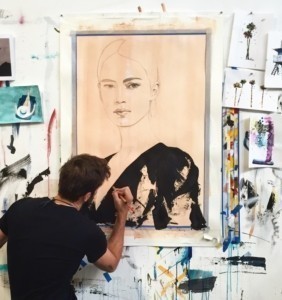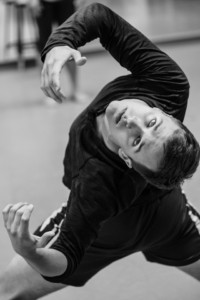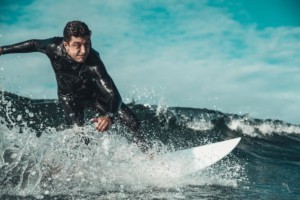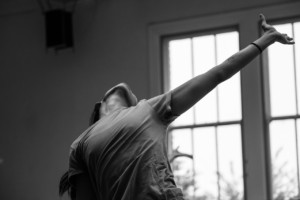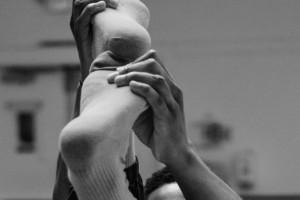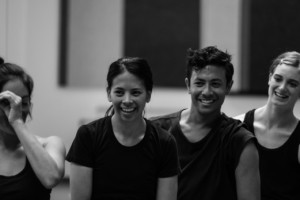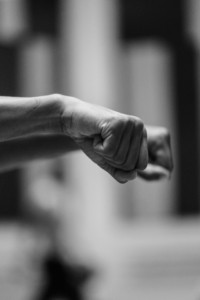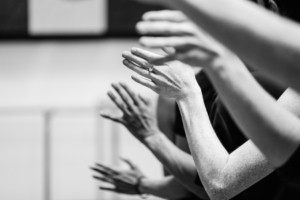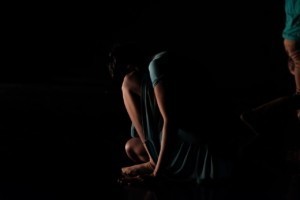It is hardly surprising that with an Italian father, a name like Stefano Francesco Altamura and being raised up in a Catholic household surrounded by Renaissance art, Whim W’Him‘s new photographer, was himself drawn to drawing from a very early age. “I was always aware of the greats.” In school, though, “I was not the best student. All I did was draw in class. Lots of cartoon characters.” It wasn’t until after high school that he took up painting and also became fascinated with women’s high fashion.
But one way or other, the human form has inspired him for a long time. “It’s the best thing, so natural, all the curves.” Stefano was hired at his current 40-hr/week day-job in a commercial art studio “for realistic figurative portraits.” There he works mostly on big pieces for big places and commission work for business clients, though “I can do a bit with 3-D, wood, and construction too. Most [of the other employees] do abstract, illustrative or landscape painting.”
Despite having “jumped around a lot when it comes to art,” he muses, “my painting is somewhat more classical, than his photography. It has less of an individual voice and style.” He adds, “My photography unknowingly has found that.”
Oddly enough, photography crept into Stefano’s life sideways. Since “I never use my cell camera,” a couple of years ago, he bought a proper camera “to use for painting, to take photos for later reference. It stemmed into a passion.” He notes that he has been able to take what he’d learned in painting “about portraiture, composition, color, a sense of fine art—and apply those traits to photography.”
The subjects Stefano studies most avidly with his lens are the curving shapes of nature, which he strives to capture in motion. He loves to photograph the ocean, both in almost-abstract images of the water itself and shots of surfers catching waves.
As to dance, Stefano says, “I’d used a lot of female forms, in painting primarily, but I wasn’t so sure at first about dance.” His partner, Hilary Grumman, is a dancer, however, and the connection now seems inevitable. The combination of “my interest in human anatomy and the phenomenal bodies of dancers,” made it “an easy transition to shoot people in top physical form.” In his dance images, he seeks to register “movement in the moment, something less stagnant” than much of the posed-looking photography of dance, especially classical ballet.
Like his adoption of photography, Stefano’s connection with Whim W’Him came about obliquely. Even before began to take pictures, at Velocity Dance Center he’d seen and been intrigued by some excerpt of W’Him pieces. Hilary has worked with Adam Barruch who had choreographed for the company. Once he started taking pictures, Stefano started reaching out to people with an eye to photographing dance. First to former Whim Justin Reiter, then Whim W’Him artistic director Olivier Wevers. At first he was politely told that Whim W’Him couldn’t work with anyone else because of a contract with La Vie Fine Art Photography. But maybe a year later, when changes in the lives of La Vie’s Kim & Adam Bamberg and Molly Magee meant they could no longer continue as company photographers, Stefano was recommended for the job. Shooting alongside them at the company’s Transfigurate dress rehearsal last June became Stefano’s final “interview” before being officially engaged.
“It was stepping into big shoes,” says Stefano (or socks, I amended), which is certainly true. “To start with,” he admits, “I was a bit worried. My style very different from the clean Bamberg aesthetic, with darker color zones.” Yet as Kim had found when the Bambergs were first working with Whim W’Him, “Olivier was super open to my [Stefano’s] being an artist in my own right, not just documenting for archival purposes but accentuating a moment. I got it directly from Olivier: art first. Also, contemporary dance is not ballet.” And just as important, the Bambergs and Molly, Olivier and the dancers were “warm-hearted and so welcoming! It seems more like a family. You’re part of something, and I’m super-grateful.”
In his fascination with capturing the moving (in both senses) human body, Stefano seems to have found his true métier, as is beautifully expressed by his recent photographs of Whim W’Him in action, in the studio and onstage.
With this fall’s Choreographic Shindig IV, his impressionistic, going-after-the-essence approach elicits radically different images of three radically different dance works.
Over the next 3 week’s posts will feature—with lights and costumes and color from the Choreographic Shindig IV—some of the first fruits of the new Whim W’Him/Stefano Altamura affiliation.
